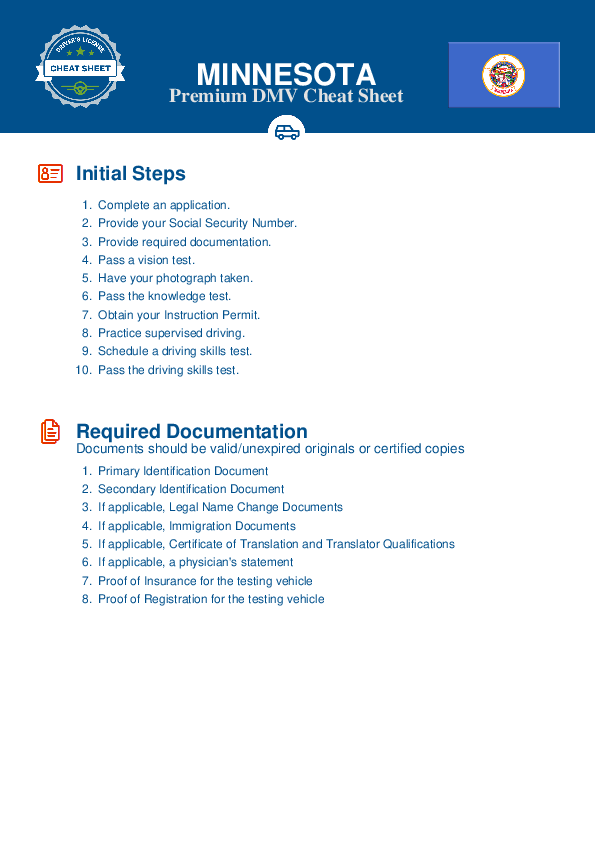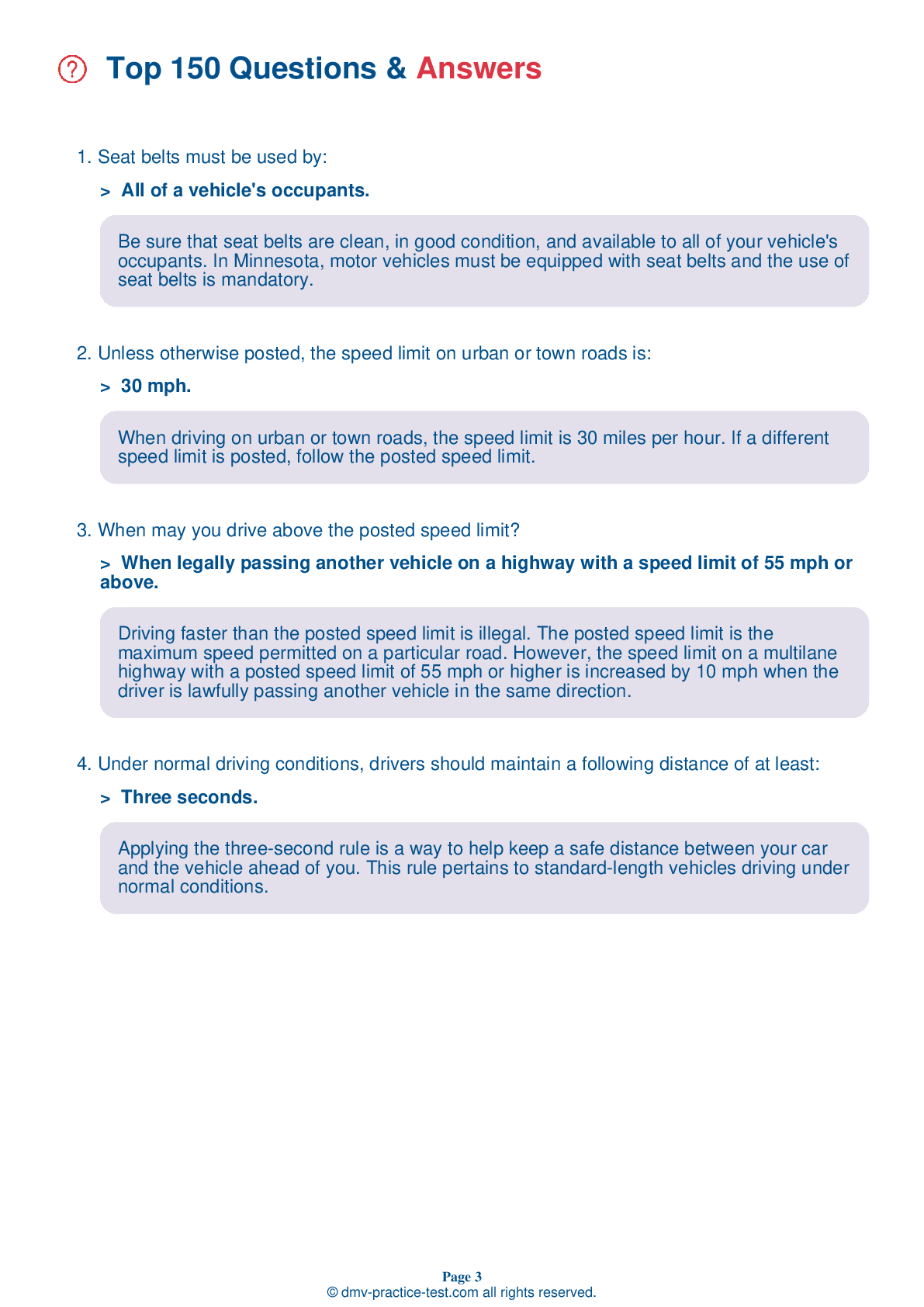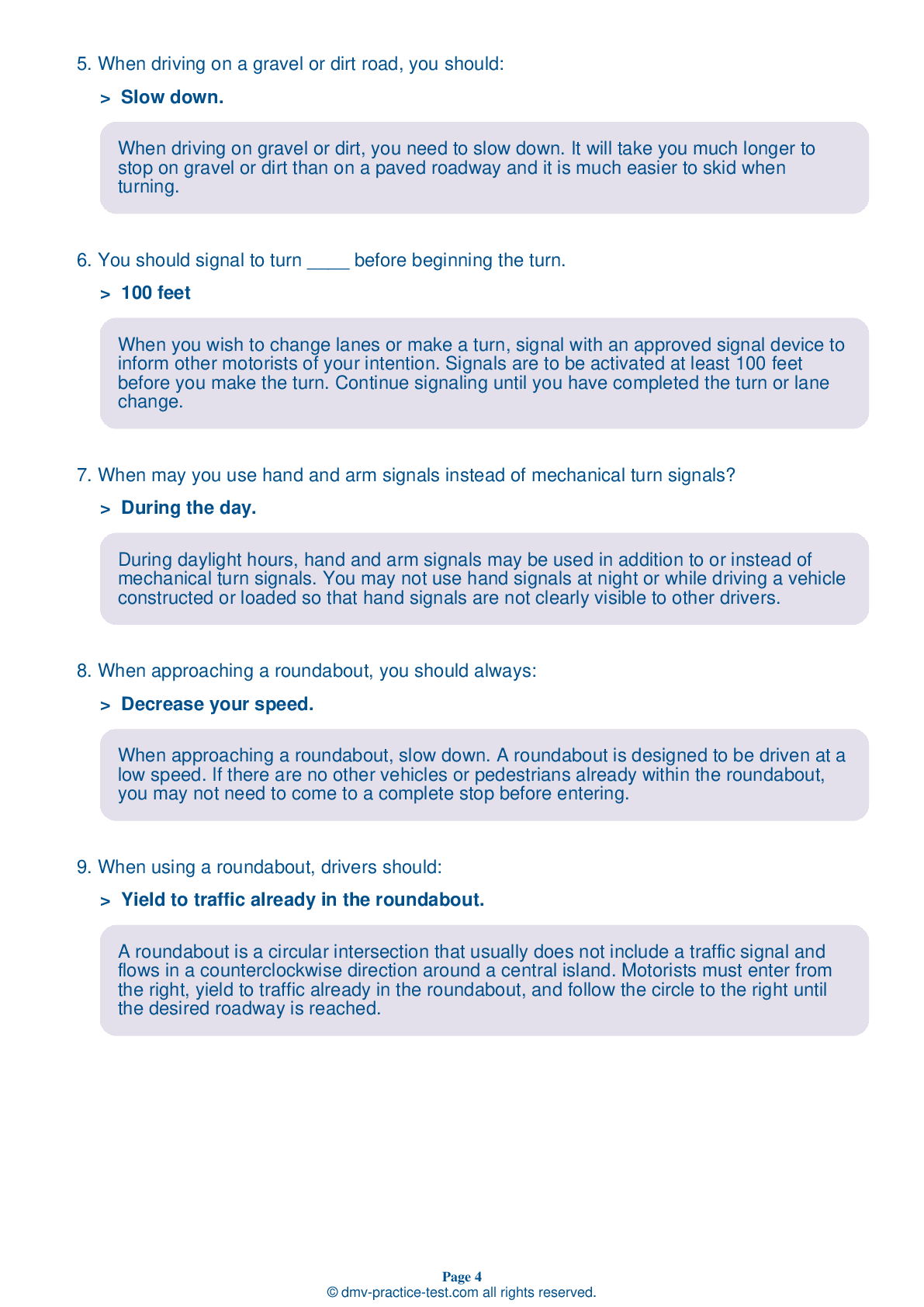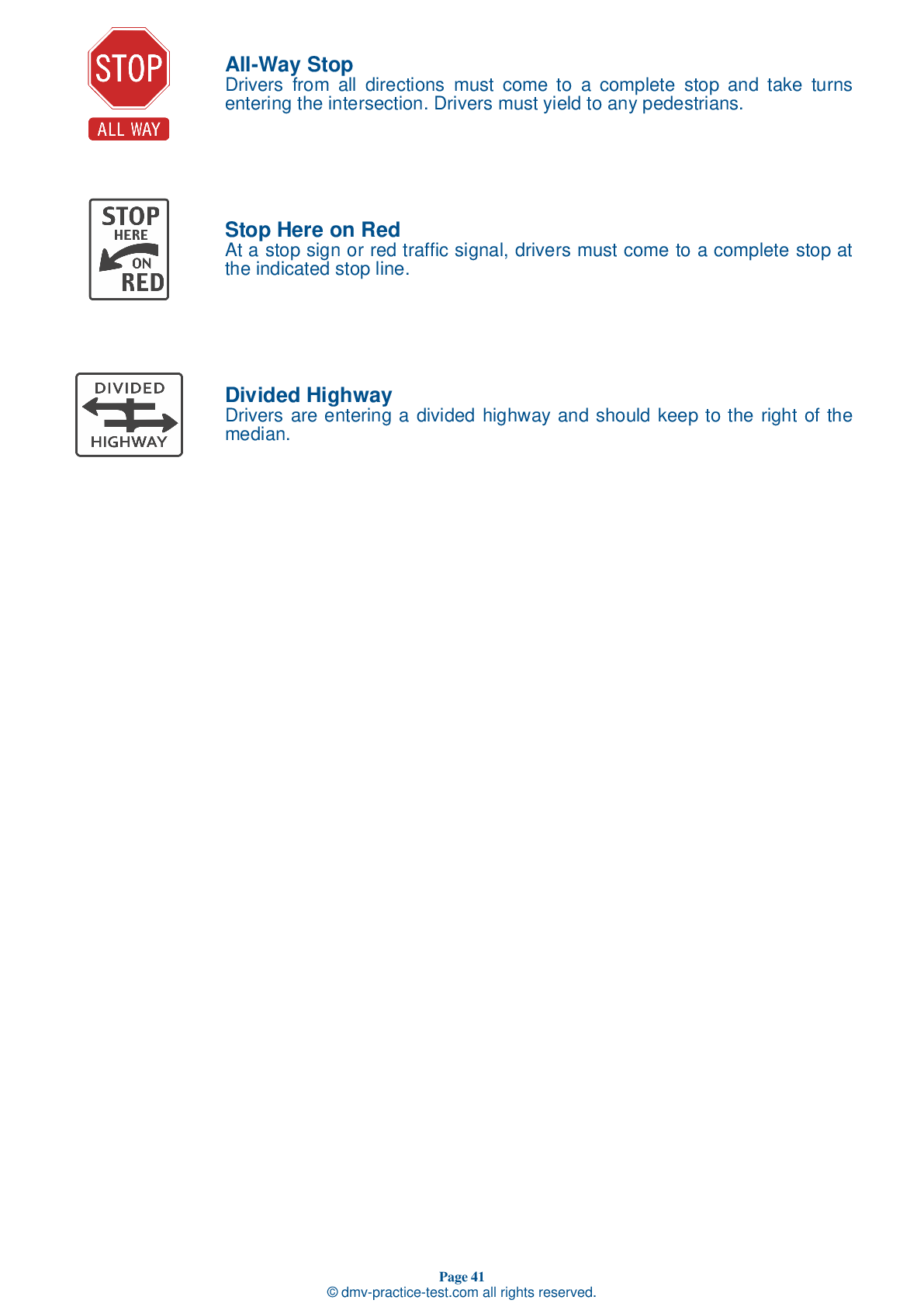FREE Minnesota DMV Practice Test #4 Page 2 of 5
The Minnesota DMV practise examinations have been updated for January 2025. It includes questions based on the Minnesota Driver Handbook's most essential traffic signals and laws for 2025. Use actual questions that are very similar (often identical!) to the DMV driving permit test and driver's licence exam to study for the DMV driving permit test and driver's licence exam.
On the practise exam, each question gets a tip and explanation to help you remember the concepts. The written component of the official Minnesota DMV test will include questions about traffic rules, traffic signs, and driving statutes, as well as knowledge from the Driver Handbook.
To obtain a passing grade, you must correctly answer 32 of the 40 questions. To help you prepare for your instruction permit or driver's licence, take our Minnesota DMV practise test.
The DMV exam is available in several languages.
Using any kind of testing assistance will result in an automatic fail, and the DMV may take additional action against your driver's licence, so stay away from it.
9 . It is important to be alert to motorcycles because:
Motorcycles are smaller and harder to see than cars. Because of their size, they are easily hidden in a car’s blind spot. It may be difficult to judge your distance to a motorcycle and difficult to tell how fast a motorcycle is moving, so always be alert and extra cautious when near a motorcyclist.
10 . Stress can affect your driving by:
Emotions can have a great effect on your driving ability. You may not be able to drive well if you are overly worried, excited, afraid, angry, or sad. Stress can lessen your concentration on the task of driving. It is better to wait to drive than to risk driving while you are emotionally unstable.
11 . There may be times when 10 mph is too fast for drivers to safely operate their vehicles.
Drive below the posted speed limit when safety demands it. Some traffic, weather, or visibility conditions may require you to drive as slowly as 10 miles per hour.
12 . This sign means:
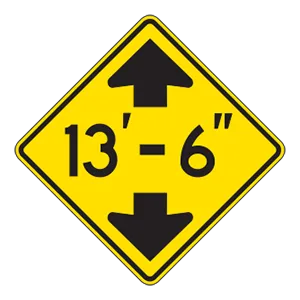
Warning signs prepare drivers for upcoming road conditions and hazards and are usually yellow with black markings. This sign tells drivers that they are approaching an area with low clearance.
13 . Motorists are not required to yield to pedestrians if they are walking against the traffic light.
You must always yield the right-of-way to pedestrians. Be aware of the possibility that pedestrians may misjudge traffic signals and cross against a light.
14 . When approaching a steady yellow traffic light, drivers should:
A steady yellow traffic light indicates that a red light is about to appear. Stop unless you are already within the intersection.
15 . Increasing your vehicle’s speed:
The faster you drive, the smaller your field of vision becomes. As your speed increases and your field of vision decreases, you must be extra alert to potential hazards.
16 . When approaching a railroad crossing that has no warning signals (such as electric flashing lights or gates), a driver should slow down, look, and listen.
If a railroad crossing has no warning devices or only a crossbuck sign, you should slow down, look in both directions of the track, and listen for a train or railroad equipment. Only proceed with caution across the tracks when it is safe to do so.
See the exact questions that will be on the 2025 Minnesota DMV exam.
99.2% of people who use the cheat sheet pass the FIRST TIME
LT gives us an insight on how the cheat sheet provided her with all the study questions she needed before taking her test.
Joe initially studied with the handbook and failed his test, he eventually found us online, studied and pass his test the first time around.
